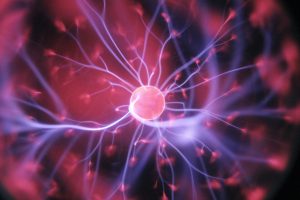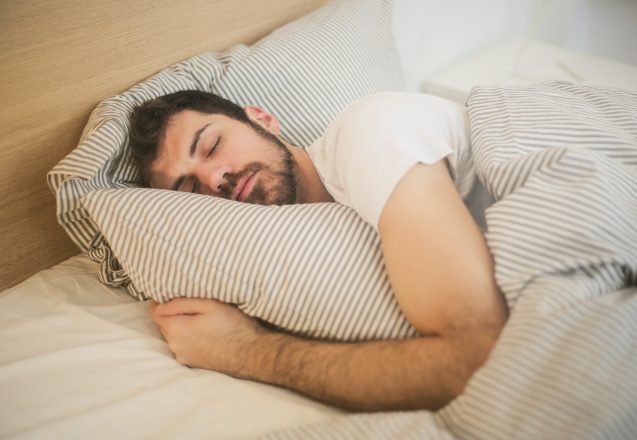See What Happens If You Don’t Give Up
 Anyone who ever has had a goal they held near and dear, knows that sometimes there are roadblocks in the way. If your goal is losing weight, building muscle, or getting fit, you might find yourself hitting a wall, too. When that happens, it’s easy to get frustrated and think about quitting, but don’t give up. It only takes one more week, one more day, or one more workout to see results. You’ll love what happens when you don’t quit.
Anyone who ever has had a goal they held near and dear, knows that sometimes there are roadblocks in the way. If your goal is losing weight, building muscle, or getting fit, you might find yourself hitting a wall, too. When that happens, it’s easy to get frustrated and think about quitting, but don’t give up. It only takes one more week, one more day, or one more workout to see results. You’ll love what happens when you don’t quit.
It’s easy to get discouraged.
There are many reasons people get discouraged when working out. Plateauing is one of those reasons. If you’ve been faithful to your exercise program and healthy diet, but aren’t seeing the results you want, quitting isn’t the answer. Instead of giving up, make some changes to your workout. Plateauing can occur when you do the same routine repeatedly. Your body becomes efficient at the movements and burns fewer calories. That slows down progress or causes you to plateau.
One mistake doesn’t mean you should quit.
Whether you skipped a few gym sessions or ate a whole cake, it doesn’t mean you should quit. It means you had a setback. Start fresh the next day. Backsliding once doesn’t define you. When you were a toddler, you fell multiple times but got right back up and walked. It took many tries before you could walk for a while without falling. When you finally did, you kept on going. You walked and then ran with ease. Toddlers don’t give up and neither should you.
Don’t expect weight loss to be a straight line.
Weight loss doesn’t occur in a straight line. Some weeks you’ll lose more than your goal and other weeks less. It’s a bumpy line downward with some disappointments along the way. If you’re ready to quit because you gained a pound, even though you did everything right, don’t. Next week you’ll probably lose more than your desired goal. It’s all about progress over the long haul.
- Using pounds as the only measurement of success can be deceiving. Sometimes, you’re gaining muscle. Muscle tissue weighs more per cubic inch than fat does, so your measurements will be smaller.
- You’ll be amazed at all the other benefits you get from a fitness program besides endurance and weight loss. You’ll feel amazing, too. A workout can eliminate stress and boost your mood.
- You’ll notice you look and feel years younger when you don’t quit. Exercise brings relief to back aches and joint pain. Your posture will improve to help relieve headaches.
- Your mood will improve when you don’t give up. Exercise increases endorphins that make you feel good. You’ll sleep better at night, which also is a mood booster. Sticking with the program can change your whole life.
For more information, contact us today at LIV Fitness



 LIV Fitness in Livermore, CA, helps people build muscle mass by using science-backed methods. You’ll get stronger if you lift heavy things, but there’s more to building muscle than that. If you want to build muscle mass, it takes a different approach than it does to build strength. Knowing that difference is key. How much weight you lift, the number of repetitions, and your form is also important are also important. If you lift wrong, you can strain muscles and live in pain for months. Lifting without using scientific techniques can bring progress, but it will be slower than what you get from the best methods.
LIV Fitness in Livermore, CA, helps people build muscle mass by using science-backed methods. You’ll get stronger if you lift heavy things, but there’s more to building muscle than that. If you want to build muscle mass, it takes a different approach than it does to build strength. Knowing that difference is key. How much weight you lift, the number of repetitions, and your form is also important are also important. If you lift wrong, you can strain muscles and live in pain for months. Lifting without using scientific techniques can bring progress, but it will be slower than what you get from the best methods.
 Is there a way to improve your running form? After all, you’ve been running since you were very young and your form has served you well until now. Yes, it is not only possible but also important if you’re going to run often or in competition. It helps reduce the potential for injury, improves efficiency, and increases speed. If you want to boost health benefits, you need to improve your gait. That lets you run further and at higher intensities. You may not have learned to run properly first started to run, or you’ve picked up a lot of bad habits along the way.
Is there a way to improve your running form? After all, you’ve been running since you were very young and your form has served you well until now. Yes, it is not only possible but also important if you’re going to run often or in competition. It helps reduce the potential for injury, improves efficiency, and increases speed. If you want to boost health benefits, you need to improve your gait. That lets you run further and at higher intensities. You may not have learned to run properly first started to run, or you’ve picked up a lot of bad habits along the way.
 If you go to the gym on an empty stomach or don’t eat for hours after working out, you may be doing yourself a disservice. The food you consume before and after your workout helps determine whether you have the energy for maximum benefits, recover faster, and build muscle tissue. There’s no right combination of macronutrients, but some generalizations. Everyone is different, so the snack should have a medium amount of protein, be high in carbohydrates, and contain a small amount of healthy fat.
If you go to the gym on an empty stomach or don’t eat for hours after working out, you may be doing yourself a disservice. The food you consume before and after your workout helps determine whether you have the energy for maximum benefits, recover faster, and build muscle tissue. There’s no right combination of macronutrients, but some generalizations. Everyone is different, so the snack should have a medium amount of protein, be high in carbohydrates, and contain a small amount of healthy fat.
 We help people identify ways to improve their physical at Liv Fitness in Livermore, CA. Our trainers provide personalized fitness workouts. We also provide nutrition plans specifically designed to improve performance and recovery. One factor most people overlook that affects your workout and progress is the amount of sleep you get. Adequate sleep is vital to all efforts of humans, both mental and physical.
We help people identify ways to improve their physical at Liv Fitness in Livermore, CA. Our trainers provide personalized fitness workouts. We also provide nutrition plans specifically designed to improve performance and recovery. One factor most people overlook that affects your workout and progress is the amount of sleep you get. Adequate sleep is vital to all efforts of humans, both mental and physical.
 Most people struggle to define what wellness is. They either say, “not being sick” or “being well.” The same is true of meditation or stress. You can’t touch those things or see them. People understand the concepts without being able to put them into precise words or create a mental picture. That elusiveness of definition isn’t the only connection. Not only are there other links between them, but every year scientists are learning more connections.
Most people struggle to define what wellness is. They either say, “not being sick” or “being well.” The same is true of meditation or stress. You can’t touch those things or see them. People understand the concepts without being able to put them into precise words or create a mental picture. That elusiveness of definition isn’t the only connection. Not only are there other links between them, but every year scientists are learning more connections.
 It’s easier to stay hydrated when you’re lying on a lounger in the sun because you’re more aware you’re sweating and hot. It’s not as easy during your workout and hyper focused on exercise. When people workout, thirst should be the first reminder, but if the entire focus is on doing one more set, it may be ignored. The more dehydrated a person becomes, the more threatening the signs become. Take extra precautions and have a hydration system in place to avoid the problem. It can be as simple as drinking a small amount after each exercise.
It’s easier to stay hydrated when you’re lying on a lounger in the sun because you’re more aware you’re sweating and hot. It’s not as easy during your workout and hyper focused on exercise. When people workout, thirst should be the first reminder, but if the entire focus is on doing one more set, it may be ignored. The more dehydrated a person becomes, the more threatening the signs become. Take extra precautions and have a hydration system in place to avoid the problem. It can be as simple as drinking a small amount after each exercise.
 If you carried an extra 50 to 100 pounds strapped onto your waist, by the end of the day, your entire lower body would hurt. The muscles would be painful, but so would the joints. That’s because excess weight can trigger hip and knee pain. The American Association of Orthopedic Surgeons says the hip and knee joints are affected by weight. They experience a force that’s greater than seven times that person’s weight. If you weigh 250 pounds, that force is 1750 pounds. If you lose 100 pounds, the force reduces to 1050 pounds of pressure, a huge difference. Weight loss is one controllable factor to reduce pain in the lower joints.
If you carried an extra 50 to 100 pounds strapped onto your waist, by the end of the day, your entire lower body would hurt. The muscles would be painful, but so would the joints. That’s because excess weight can trigger hip and knee pain. The American Association of Orthopedic Surgeons says the hip and knee joints are affected by weight. They experience a force that’s greater than seven times that person’s weight. If you weigh 250 pounds, that force is 1750 pounds. If you lose 100 pounds, the force reduces to 1050 pounds of pressure, a huge difference. Weight loss is one controllable factor to reduce pain in the lower joints.
 If you workout at Liv Fitness in Tracy, CA, you probably are active outside the gym. You may go swimming, biking, running, or hiking and probably wonder which one burns the most calories. It’s not an easy question to answer, since that depends on several factors. How fast is your pace and how intensely are you exercising? How long are you exercising?
If you workout at Liv Fitness in Tracy, CA, you probably are active outside the gym. You may go swimming, biking, running, or hiking and probably wonder which one burns the most calories. It’s not an easy question to answer, since that depends on several factors. How fast is your pace and how intensely are you exercising? How long are you exercising?
 Spending time at the gym with a personal trainer is the best way to lose weight and build muscle, but it’s best to vary your exercise to keep it interesting. One form of exercise, yoga, provides flexibility and serenity while boosting weight loss. The reason for that is a bit elusive. It doesn’t burn as many calories as traditional workouts. In most cases, it’s less intense. Even though it doesn’t burn as many calories per hour, it still burns more calories than binge-watching Netflix. Most yoga provides restoration, although some are more grueling like Bikram yoga which burns between 477 and 594 calories an hour.
Spending time at the gym with a personal trainer is the best way to lose weight and build muscle, but it’s best to vary your exercise to keep it interesting. One form of exercise, yoga, provides flexibility and serenity while boosting weight loss. The reason for that is a bit elusive. It doesn’t burn as many calories as traditional workouts. In most cases, it’s less intense. Even though it doesn’t burn as many calories per hour, it still burns more calories than binge-watching Netflix. Most yoga provides restoration, although some are more grueling like Bikram yoga which burns between 477 and 594 calories an hour.